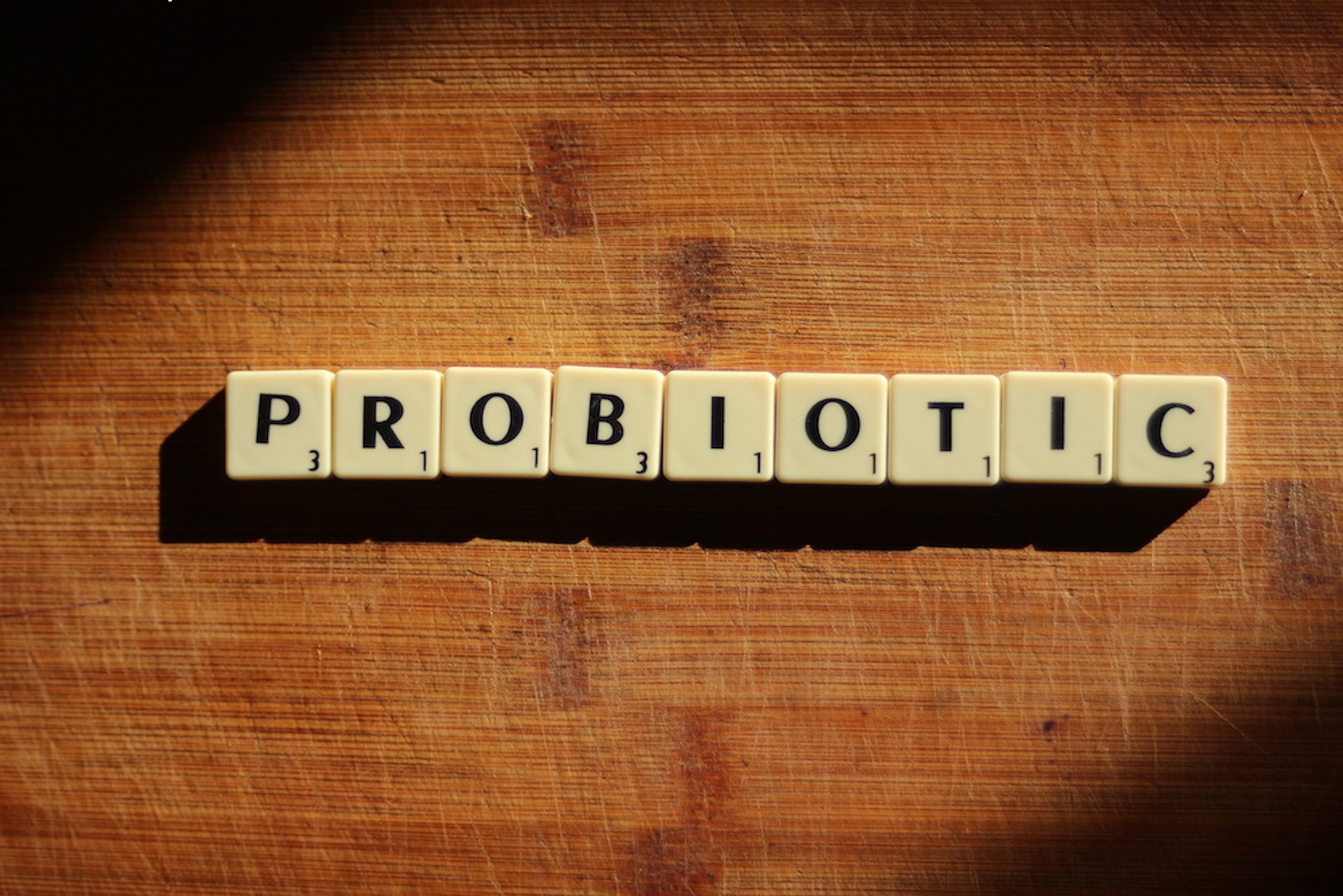So here I am, 35 weeks pregnant and searching for the best probiotic strains against Candida. Why? Well, I am dealing with the very unwelcomed, but sadly recurring, yeast infection. Apparently, my body just has decided to throw in a little extra “yeast-er” surprise.
Why I am looking into probiotic strains? Because being pregnant means having to be cautious about the medications we take. Antifungal drugs? More like “anti-fun-gal” when it comes to their impact on the baby. So, how do I fight Candida while being pregnant?
There’s a ray of hope shining through in the form of probiotics. They are considered safe during pregnancy, and scientific studies have shown they can help keep candida in check. Today, I’ll delve into the world of probiotics, revealing which ones are best for inhibiting the advances of candida.
Lactobacillus rhamnosus GG 53103 (same as L. rhamnosus GG).1,2
This is probably one of the most studied probiotic against Candida. The study published in 2017 showed that L. rhamnosus GG has the ability to inhibit the growth, hyphal formation, and adhesion of Candida species. One important factor in these interactions is that L rhamnosus GG produces , which complex carbohydrates, called Exopolysaccharides. These carbohydrates played a significant role, particularly in inhibiting the adhesion of Candida. In the case of Candida species, adhesion refers to the ability of these fungi to attach to host tissues, such as mucosal surfaces in the oral cavity or genital tract. Candida adhesion is facilitated by specific molecules on the surface of the fungal cells, which interact with receptors or binding sites present on host cells. Adhesion is an important initial step in the colonization and infection process of Candida, as it allows the fungi to establish a foothold and initiate further interactions with the host immune system.
Findings suggest that L. rhamnosus GG has the potential to be explored as therapeutic in strategies aimed at fighting Candida.1
In another study, researchers conducted a clinical trial in large neonatal intensive care unit. Involving 80 preterm newborns with a very low birth weight over a period of 12 months. The neonates were randomly assigned to two groups. Group A received an oral probiotic added to milk for 6 weeks or until discharge. Group B received milk alone. Specimens were collected weekly from different places (mouth, stool, gastric aspirate, and rectum) to check for the presence and severity of fungal colonization in the gastrointestinal tract.
The results showed that the incidence of fungal colonization in the gut was significantly lower in Group A compared to Group B (23.1% vs. 48.8%). The number of fungal isolates obtained from each neonate and each colonized patient was also lower in Group A. The probiotic L. casei subspecies rhamnosus was particularly effective in neonates with a birth weight of 1001-1500 grams. The proportions of different Candida strains did not change, and no adverse effects associated with the probiotic were reported.
In conclusion, orally administering L. casei subspecies rhamnosus significantly reduced the occurrence and severity of Candida species colonization in the gut of very low birth weight neonates.2
Lactobacillus reuteri DSM 17938 and PTA 52893
Another study found that both strains of Lactobacillus reuteri (L. reuteri) had antifungal properties and could stop the growth of most Candida strains. The study suggests that these strains and particularly L. reuteri ATCC PTA 5289, may be successful because it can compete with Candida for binding sites in oral biofilms. Essentially, this probiotic strain has the ability to bind to the same spots that Candida would occupy, preventing its growth.
The study also looked into how the lactobacilli achieved their inhibitory effects. It was suggested that the lactobacilli creates an acidic environment by producing lactic acid and other organic acids. This acidity slows the growth of Candida species by forcing them to use up energy, which ultimately leads to their growth inhibition and death. However, Candida krusei and Candida tropicalis showed the ability to neutralize these acids. That allows them to survive in a more favorable pH environment.3
Lactobacillus acidophilus 43564
The study used two methods, in vitro and in vivo. Study found that Lactobacillus acidophilus (L. acidophilus) can stop the growth of Candida albicans biofilms. The best results were seen after 24 hours of growing L. acidophilus. The liquid produced by L. acidophilus also reduced the growth of C. albicans cells. L. acidophilus prevented C. albicans from forming long, thread-like structures called hyphae. In a model using Galleria mellonella larvae, L. acidophilus helped the larvae survive when they were infected with C. albicans. When given before or after the infection this probiotic lowered the amount of C. albicans in the larvae’s blood. Overall, the study suggests that L. acidophilus can stop C. albicans from forming biofilms, prevent it from turning into hyphae, and reduce its ability to cause disease. This makes L. acidophilus a potential treatment for candidiasis.4
Lactobacillus rhamnosus GR-1 and L. fermentum RC-145
In a study involving 64 healthy women, that were given daily oral capsules of Lactobacillus rhamnosus GR-1 and Lactobacillus fermentum RC-14 for 60 days. Microscopy analysis showed that 37% of women treated with lactobacilli had their bacterial vaginosis microflora restored to a normal lactobacilli colonized microflora, compared to 13% in the placebo group. Lactobacilli were found in more women in the treatment group than in the placebo group at 28 and 60 days. Culture findings confirmed that there was a significant increase in vaginal lactobacilli at day 28 and 60. Significant decrease in yeast at day 28, and a significant reduction in coliforms at day 28, 60, and 90 for the women treated with lactobacilli. Therefore, the combination of L. rhamnosus GR-1 and L. fermentum RC-14 probiotics are safe for daily use in healthy women . These strains can decrease the presence of harmful bacteria and yeast in the vagina.5
Lactobacillus fermentum LF10 and Lactobacillus acidophilus LA02 6
This study included 58 women diagnosed with RVVC (recurring vulvovaginal candidiasis). Women received an induction dose of 200 mg of fluconazole orally for three alternate days during the first treatment week. Subsequently, the participants were given vaginal tablets containing the two lactobacilli strains on alternate days for 10 consecutive nights. Those who remained symptom-free entered the second phase, receiving one vaginal tablet every week for the next 10 weeks. The patients were then observed without treatment for 7 months.
During the second 10-week prophylactic phase, 86.0% of patients remained free of clinical recurrence, while symptomatic RVVC occurred in 14.0% of patients. Throughout the 7-month observation period, 85.7% of patients were symptom-free, and clinical recurrences occurred in 14.3% of patients. Overall, 72.4% of women experienced no clinical recurrence during the entire 7-month follow-up period.
The study demonstrated that the combination of L. fermentum LF10 and L. acidophilus LA02 showed promising results in preventing clinical recurrences of RVVC. The lactobacilli strains were effective in creating and maintaining a vaginal biofilm that hindered the persistence of Candida infection.
The findings support the use of specific lactobacilli strains with demonstrated activities in the treatment of RVVC. Further research, including larger placebo-controlled trials, is recommended to confirm the effectiveness of the these strains for prophylaxis against recurrent episodes of vulvovaginal candidiasis.6
Streptococcus salivarius K127
This study investigated the potential therapeutic activity of Streptococcus salivarius K12 against oral trush. The researchers aimed to evaluate the ability of S. salivarius K12 to modulate C. albicans growth in lab and its effectiveness in treating experimental oral candidiasis in a mouse model.
In the in vitro experiments, the researchers assessed the inhibition of C. albicans mycelial growth and adherence to a plastic substratum in the presence of S. salivarius K12. They found that S. salivarius K12 exhibited a dose-dependent inhibition of C. albicans adherence, and the inhibitory activity was enhanced when S. salivarius K12 was pre-cultured. Interestingly, S. salivarius K12 did not directly kill the fungi but appeared to prevent its adherence to surfaces by binding to the hyphal form of C. albicans.
To evaluate the therapeutic potential of S. salivarius K12 in oral candidiasis, the researchers conducted an oral infection model in mice. Immunocompromised mice were orally inoculated with C. albicans and then treated with S. salivarius K12 or a control substance. The results showed that oral administration of S. salivarius K12 significantly protected the mice from severe candidiasis, as evidenced by reduced severity of tongue lesions compared to the control group.7
In conclusion,
as I navigate through the joys and challenges of pregnancy, one thing is clear. Even the invaders like candida won’t dampen my spirit. With the help of safe and effective probiotic strains, I can keep candida in check and maintain a healthy balance down there. So, here’s to embracing the journey, embracing the bumps (baby and otherwise), and embracing the power of probiotics!
References to studies:
- Camille N. Allonsius, Marianne F. L. van den Broek, Ilke De Boeck, Shari Kiekens, Eline F. M. Oerlemans, Filip Kiekens, Kenn Foubert, Dieter Vandenheuvel, Paul Cos, Peter Delputte, and Sarah Lebeer – Interplay between Lactobacillus rhamnosus GG and Candida and the involvement of exopolysaccharides https://www.ncbi.nlm.nih.gov/pmc/articles/PMC5658588/
- P Manzoni, M Mostert, M L Leonessa, C Priolo, D Farina, C Monetti, M A Latino, G Gomirato Oral supplementation with Lactobacillus casei subspecies rhamnosus prevents enteric colonization by Candida species in preterm neonates: a randomized study https://pubmed.ncbi.nlm.nih.gov/16705580/
- Probiotic Lactobacillus reuteri has antifungal effects on oral Candida species in vitro– Mette Rose Jørgensen, Camilla Kragelund, Peter Østrup Jensen, Mette Kirstine Keller & Svante Twetman https://www.tandfonline.com/doi/full/10.1080/20002297.2016.1274582?scroll=top&needAccess=true&role=tab
- Simone FG Vilela, Júnia O Barbos, Rodnei D Rossoni, Jéssica D Santos, Marcia CA Prata, Ana Lia Anbinder, Antonio OC Jorge, Juliana C Junqueira Lactobacillus acidophilus ATCC 4356 inhibits biofilm formation by C. albicans and attenuates the experimental candidiasis in Galleria mellonella https://www.ncbi.nlm.nih.gov/pmc/articles/PMC4603435/
- Gregor Reid, Duane Charbonneau, Julie Erb, Barbara Kochanowski, Dee Beuerman, Russ Poehner, Andrew W. Bruce Oral use of Lactobacillus rhamnosus GR-1 and L. fermentum RC-14 significantly alters vaginal flora: randomized, placebo-controlled trial in 64 healthy women https://onlinelibrary.wiley.com/doi/full/10.1016/S0928-8244%2802%2900465-0
- Filippo Murina, Alessandra Graziottin, Franco Vicariotto, Francesco De Seta Can Lactobacillus fermentum LF10 and Lactobacillus acidophilus LA02 in a slow-release vaginal product be useful for prevention of recurrent vulvovaginal candidiasis?: A clinical study https://pubmed.ncbi.nlm.nih.gov/25291115/
- Sanae A Ishijima, Kazumi Hayama, Jeremy P Burton, Gregor Reid, Masashi Okada, Yuji Matsushita, Shigeru Abe Effect of Streptococcus salivarius K12 on the in vitro growth of Candida albicans and its protective effect in an oral candidiasis model https://pubmed.ncbi.nlm.nih.gov/22267663/



